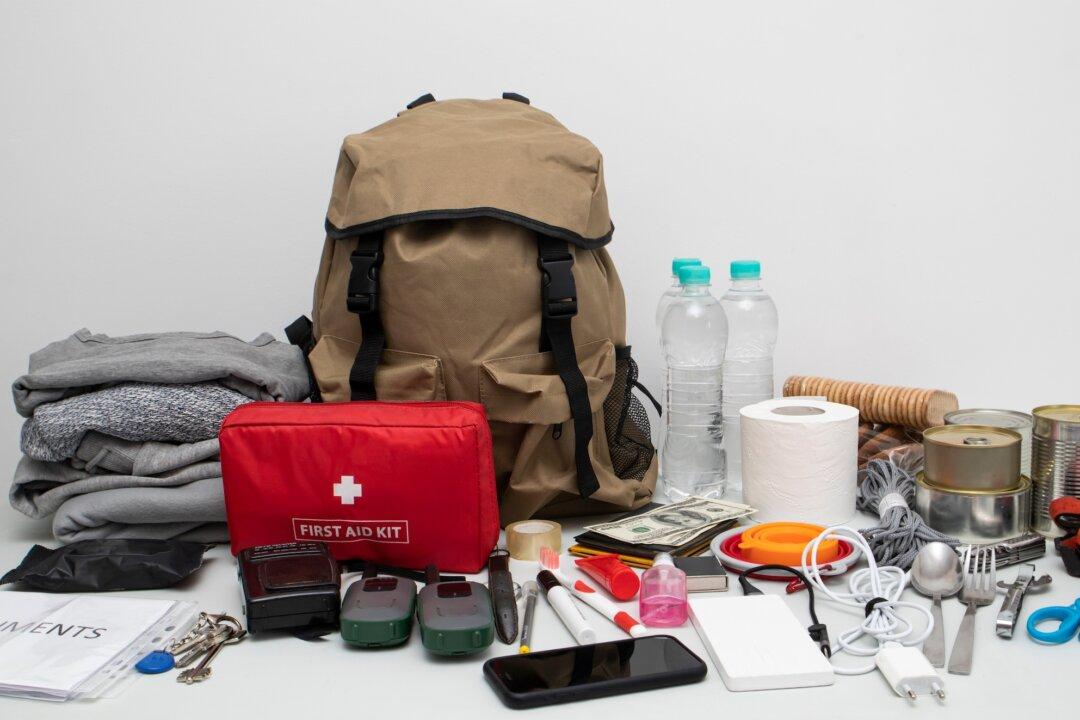The idea of emergency preparedness is good. But just having an idea is not good enough. Every person—every family—needs a plan in the event of a disaster that could disrupt the normal course of life. But where to start? That’s where most of us get stuck for lack of useful, specific direction. I hope these quick tips will do the trick to get you unstuck and on your way to being disaster-ready.
Water Storage
First of all, you don’t have to live in hurricane country to be prepared for one. Disasters can hit anywhere. This means water could be in short supply. For true emergency preparedness, store bottled drinking water in your home for your immediate needs. For flushing toilets and showers, line 30- to 45-gallon garbage cans with those large contractor plastic bags available at home improvement stores. Fill the garbage cans with water and apply their tight-fitting lids. Most people forget that three weeks without electricity means three weeks of no water if their water utility provider has not attached a generator to pump water to houses.Point Person
Next, identify a friend or relative who lives in another state to be the disaster point person for your family. Keep that person’s phone number and contact information with you at all times. Add this contact to every person’s phone. Instruct all of your family members to call this person to check in with their location and condition in the event that you become separated when disaster hits. Be sure to let the point person know too!Important Papers
One of the most critical tips for emergency preparedness is to think ahead. So scan your family’s important documents: birth certificates, passports, Social Security cards, insurance policies, property deeds, car titles, immunization records, pet medical records, school transcripts, business licenses, education degrees, and tax returns. Next, copy those files onto two DVDs or memory sticks. Keep one in a safe place, and have a trusted friend or relative in a different state—your point person—keep the other.Emergency Cash
Also, you need to have some of your contingency fund in small denominations of cash; $1,000 is reasonable, but any amount is good. Store it in a safe place outside of your bank, such as a fireproof home safe or another similarly protected receptacle known only to you and one other person. In the event of a natural disaster that cripples utilities and services, banks will be closed, and ATM machines will be down because they run on electricity, so you will want to have cash on hand.Get a Go Bag
Every household needs a “go bag.” This is a collection of items you may need in a disaster if all services are cut off and you and your family are forced to become self-sufficient. And because you may need to evacuate with little notice, your go bag needs to be packed in an easy-to-carry container such as a suitcase on wheels. Additionally, have each family member keep a backpack that contains enough basic supplies to last for 72 hours—all packed and ready to go.Full Tank
Keep your cars’ fuel tanks more full than empty. Make that a new habit. If you are required to evacuate, you won’t be the only one. Your entire community will be in the same situation. If your vehicle’s fuel tank is regularly almost empty, you'll be stuck in a very long line—assuming any filling stations are still in operation. For true emergency preparedness, make a new rule that your car’s fuel indicator never falls below half-full.Trunk Kit
Store a sweatsuit, sneakers, and a pair of old socks in the trunk of the car next to the spare tire. If there’s a flat tire, throw the sweats on over your good clothes. Next, kick off your shoes and change into sneakers. Being disaster-ready means you can change that tire without having to worry about getting dirty. Bonus: If the car simply breaks down, the sneakers will feel better on your way to the nearest service station.Check out Ready.gov for more information and terrific resources.
Dear Readers: We would love to hear from you. What topics would you like to read about? Please send your feedback and tips to features@epochtimes.nyc
Story continues below advertisement





